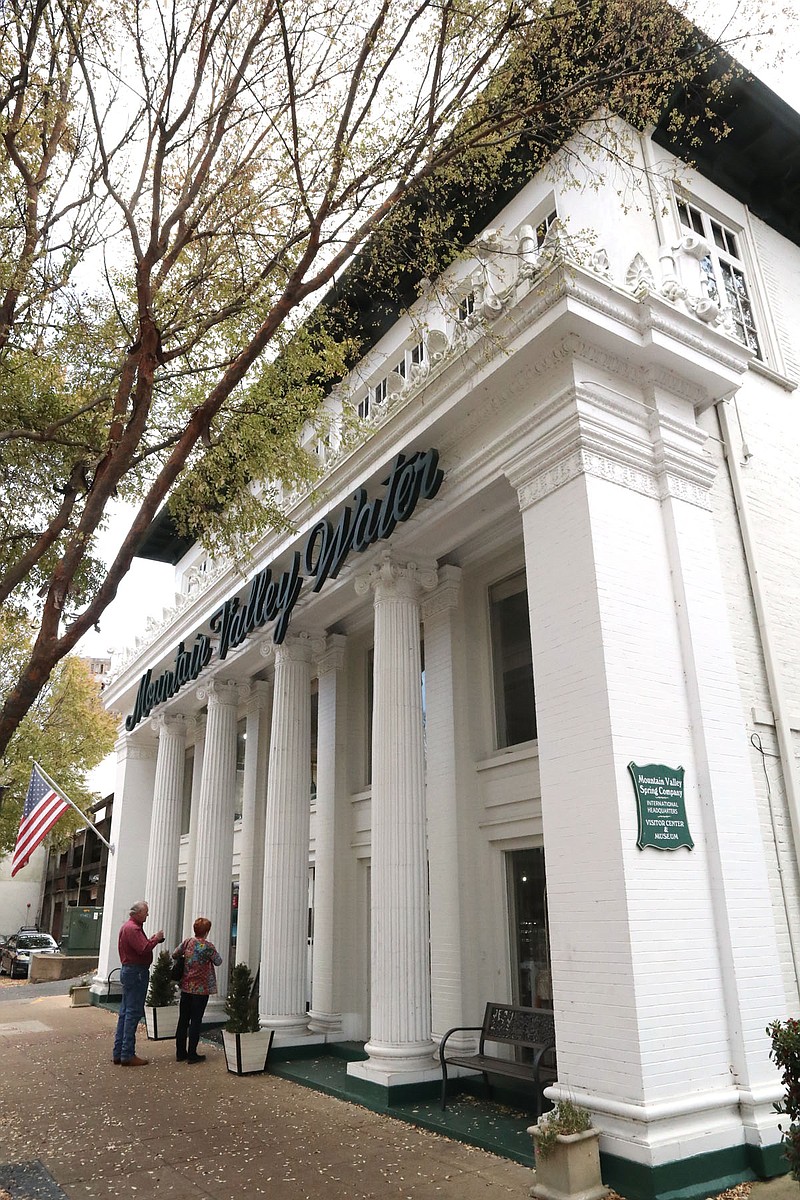HOT SPRINGS -- A recent study by a Washington-based real estate and economic development consulting firm has shown that preservation of historic buildings contributes significantly to Arkansas' economy, singling out Hot Springs as one of the examples.
The Arkansas Historic Preservation Program commissioned the study by PlaceEconomics to determine the economic impact of historic preservation by looking at "different but overlapping programs within the AHPP: Main Street Arkansas, the Arkansas Historic Rehabilitation Income Tax Credit and Arkansas Historic Preservation Program's grants."
Donovan Rypkema, principal of PlaceEconomics, said the programs have proved successful in Arkansas, with Hot Springs benefiting from the tax credit program.
"Hot Springs is the star in that report," Rypkema said.
PlaceEconomics has done studies such as this all over the country and the world, he said, and recently did one in Abu Dhabi in the United Arab Emirates where its goal "was to recommend tools and strategies. We stated Arkansas as a great, effectual model."
The study states the Arkansas Historic Rehabilitation Tax Credit has granted $21.5 million in state historic tax credits total, which attracted nearly $224 million in private investment and resulted in the rehabilitation of 342 buildings in 24 cities.
The Arkansas Historic Preservation Program, the study says, has given out "nearly 2,400 grants in 170 cities in 74 of Arkansas' 75 counties" since 1971, totaling around $55.5 million, nearly 45% of which was used for the "rehabilitation, repair, and stabilization of historic resources."
Main Street Arkansas, the study says, has invested over $377 million in the buildings, infrastructure, and public improvements on their Main Street districts, 78% of which has come from the private sector. It has also created over 3,900 net new jobs in Main Street districts, and established 1,181 net new businesses.
Hot Springs' use of the tax credits is a "national success story," Rypkema said.
The study features several other case study towns including Batesville, Conway, El Dorado, Fort Smith, Helena-West Helena, Little Rock and North Little Rock.
The Hot Springs portion of the study states that since 2009, there have been 16 projects that have used tax credits totaling $14,749,214 in investments and there has been "$976,392 in AHPP Grant Awards since 1981." Of those, 75% were used for repairs, stabilization or restoration.
Two local architects, Anthony Taylor and Bob Kempkes, are highlighted in the study.
"In the mid-1980s, Hot Springs, Arkansas, was blessed with the arrival of two architects. Bob Kempkes and Anthony Taylor came to Hot Springs and found their calling in the renovation and revitalization of historic downtown Hot Springs," the study says.
"The pair have renovated a number of significant historic buildings, including the DeSoto Building, headquarters of Mountain Valley Water Co., one of the nation's first projects to utilize the federal historic tax credit." The study also notes Kempkes and Taylor's efforts with The Waters Hotel.
"Projects like the Waters Hotel are contributing to the momentum needed to make downtown Hot Springs a vibrant market for tourists and residents alike," the study says.
Looking at the tax credit projects, the study says, "Today these properties are generating more than $75,000 in local property taxes than they were just three years ago. On average each of the past 10 years saw 10.6 direct jobs and another 7.5 indirect and induced jobs created by these projects. The direct jobs on these projects generated $326,000 in earnings and the indirect/induced jobs an additional $268,000."
Rypkema said saving these buildings builds community character and gives its citizens ownership over that character.
"This is our town. They don't own the building, (but) it doesn't make any difference," he said.
"You're walking into a building where your grandmother walked," Rypkema said, noting these classic buildings are the "physical manifestation of memory. Nothing has value without memory."
Speaking of value, Rypkema said towns with cultural heritage rather than just tourism tend to do better with tourists. He said that people who visit a place for its heritage will "spend more money per day [and] stay longer."
PlaceEconomics spent around a year on the study, finishing it in January.


